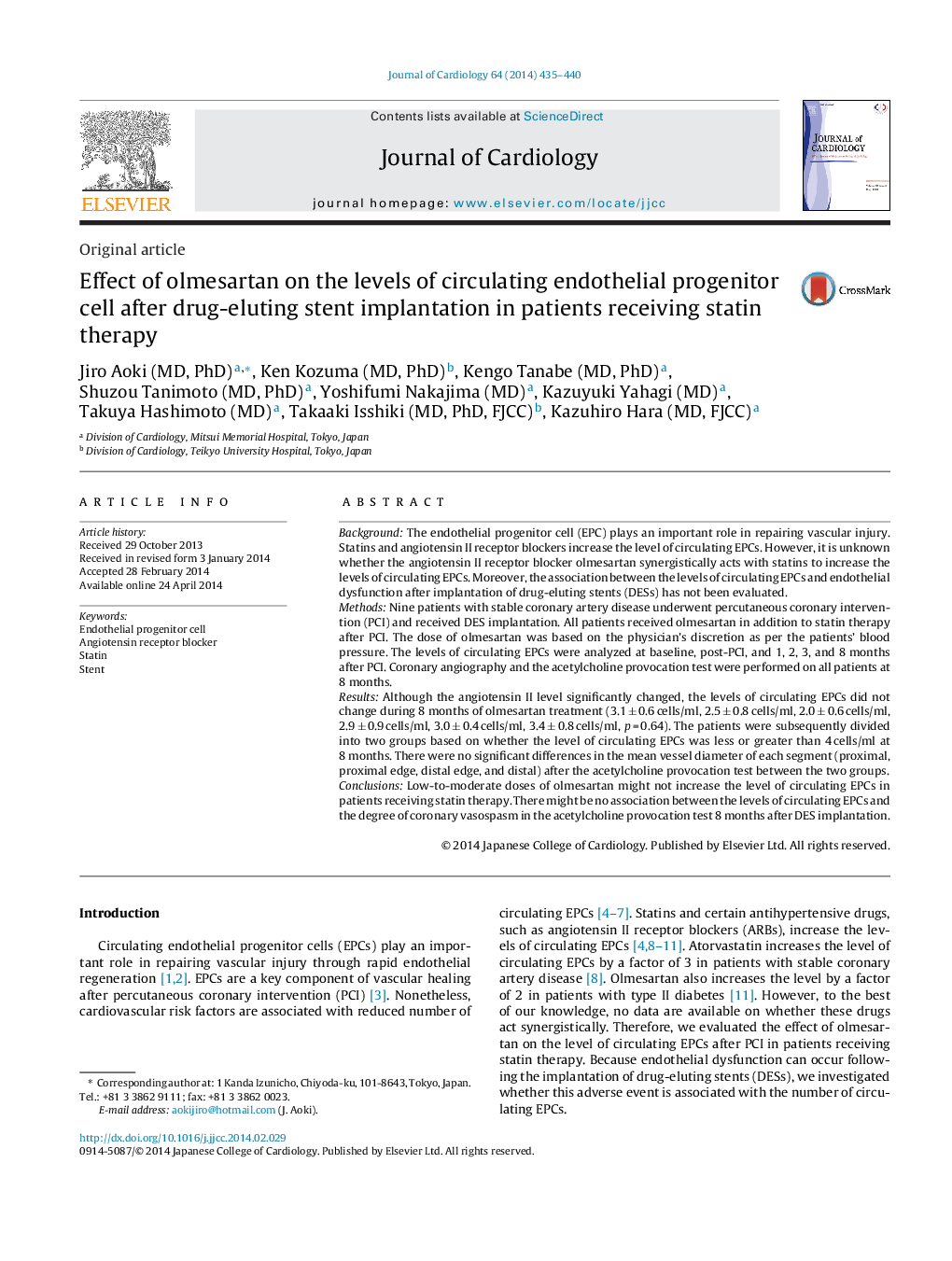| Article ID | Journal | Published Year | Pages | File Type |
|---|---|---|---|---|
| 2963110 | Journal of Cardiology | 2014 | 6 Pages |
BackgroundThe endothelial progenitor cell (EPC) plays an important role in repairing vascular injury. Statins and angiotensin II receptor blockers increase the level of circulating EPCs. However, it is unknown whether the angiotensin II receptor blocker olmesartan synergistically acts with statins to increase the levels of circulating EPCs. Moreover, the association between the levels of circulating EPCs and endothelial dysfunction after implantation of drug-eluting stents (DESs) has not been evaluated.MethodsNine patients with stable coronary artery disease underwent percutaneous coronary intervention (PCI) and received DES implantation. All patients received olmesartan in addition to statin therapy after PCI. The dose of olmesartan was based on the physician's discretion as per the patients’ blood pressure. The levels of circulating EPCs were analyzed at baseline, post-PCI, and 1, 2, 3, and 8 months after PCI. Coronary angiography and the acetylcholine provocation test were performed on all patients at 8 months.ResultsAlthough the angiotensin II level significantly changed, the levels of circulating EPCs did not change during 8 months of olmesartan treatment (3.1 ± 0.6 cells/ml, 2.5 ± 0.8 cells/ml, 2.0 ± 0.6 cells/ml, 2.9 ± 0.9 cells/ml, 3.0 ± 0.4 cells/ml, 3.4 ± 0.8 cells/ml, p = 0.64). The patients were subsequently divided into two groups based on whether the level of circulating EPCs was less or greater than 4 cells/ml at 8 months. There were no significant differences in the mean vessel diameter of each segment (proximal, proximal edge, distal edge, and distal) after the acetylcholine provocation test between the two groups.ConclusionsLow-to-moderate doses of olmesartan might not increase the level of circulating EPCs in patients receiving statin therapy. There might be no association between the levels of circulating EPCs and the degree of coronary vasospasm in the acetylcholine provocation test 8 months after DES implantation.
